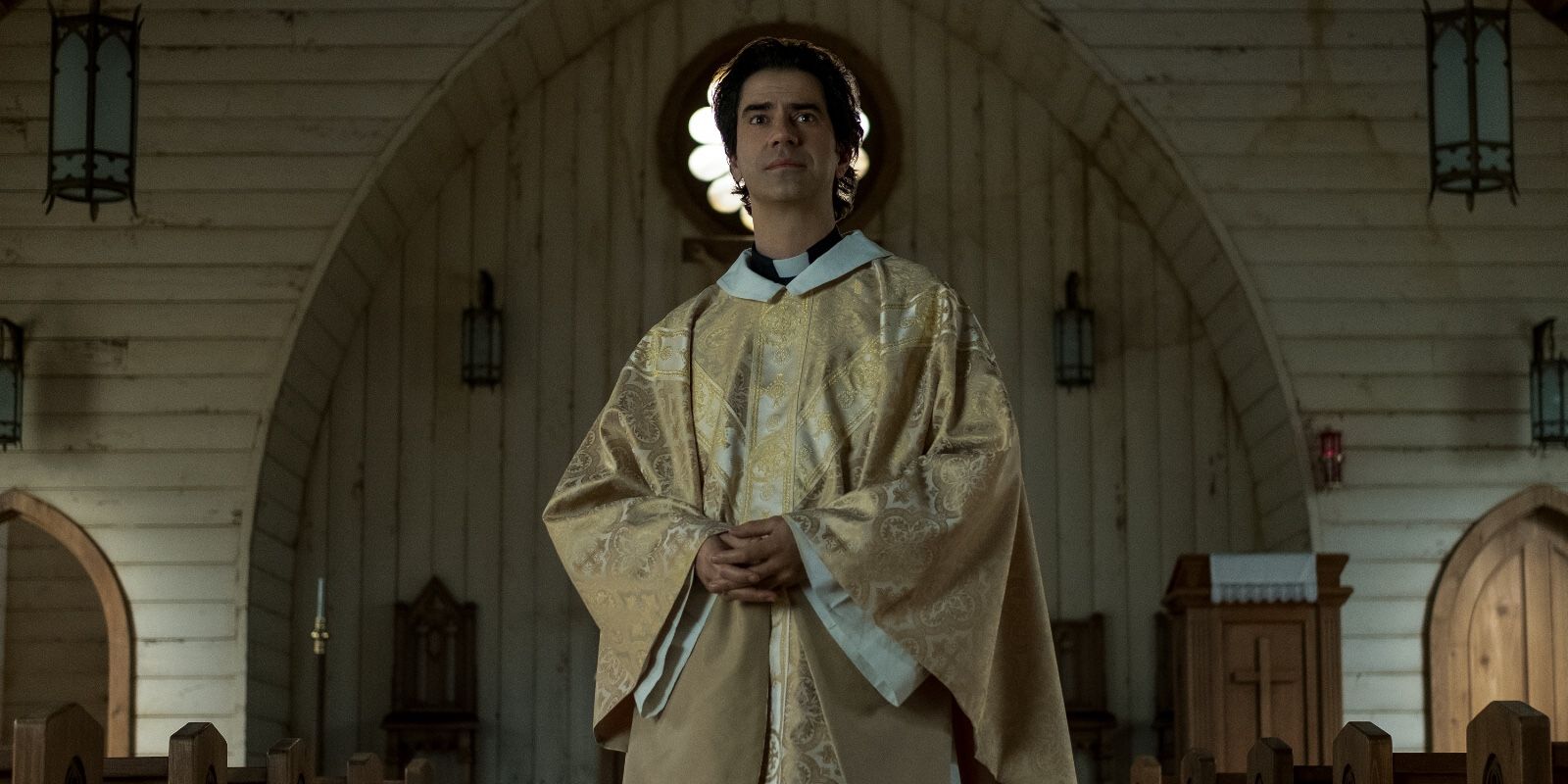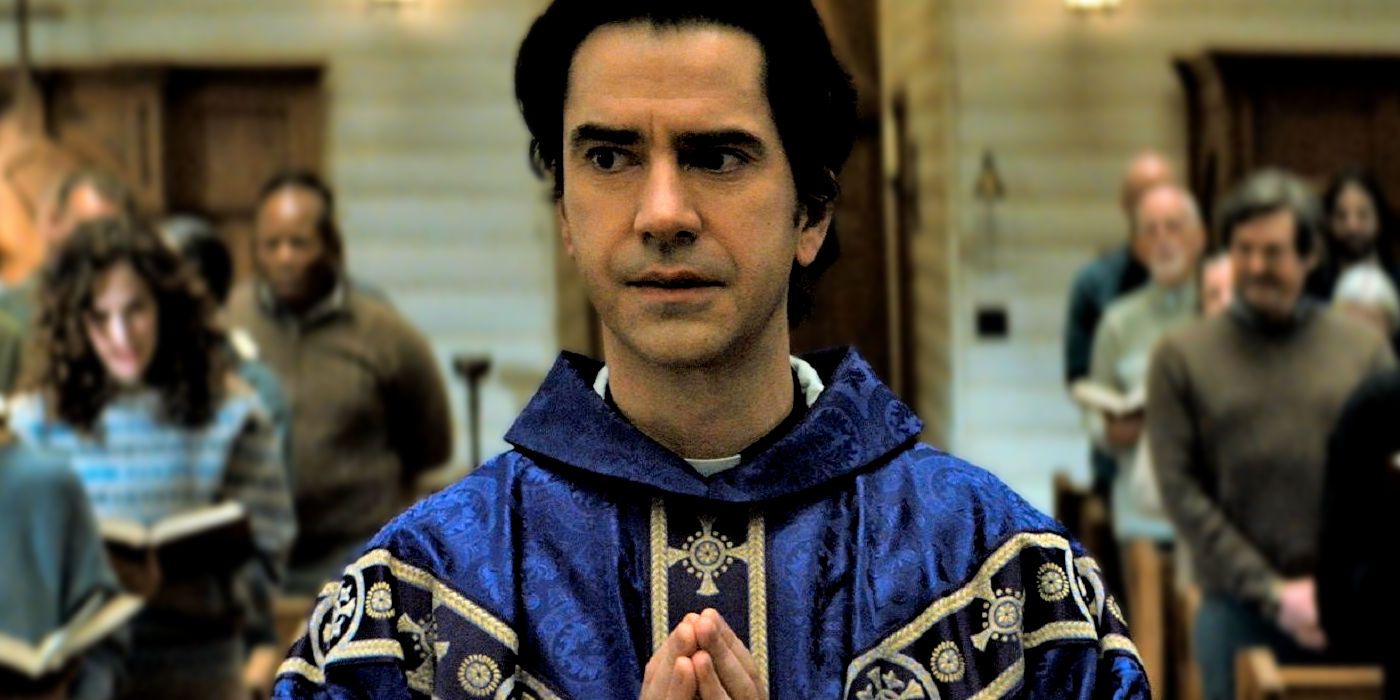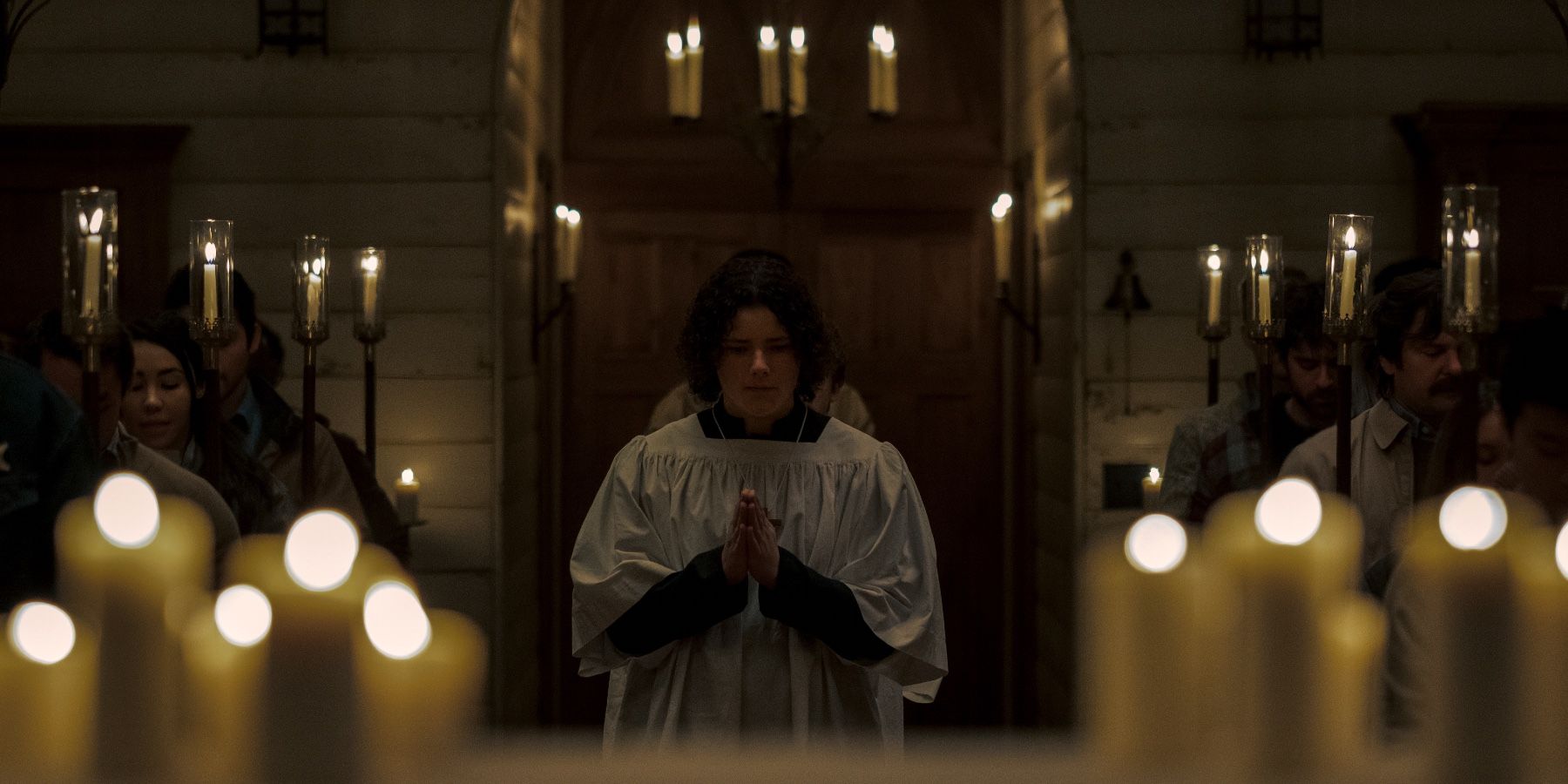
Midnight Mass introduces a monster of vampiric quality, though is referred to by the characters as an angel - so what really is it? Serving as horror director Mike Flanagan’s follow-up to his critically acclaimed The Haunting of Hill House and The Haunting of Bly Manor shows on Netflix, Midnight Mass is a terrifying and illuminating tale of a small religious community on Crockett Island that becomes corrupted by the supernatural when a new priest arrives. The show resembles the novel of the same name by F. Paul Wilson, but its story is entirely separate from that, and it's something that has actually been built up through inclusions in Flanagan’s movies Hush and Gerald’s Game.
Once Father Paul arrives on Crockett Island, strange things begin to happen to the townspeople who attend mass daily. Leeza regains her ability to walk, Mildred grows young, Erin loses her baby (with no signs that she had ever been pregnant), Ed’s body becomes more youthful, and Annie’s vision is cleared up, all of which is predated by Father Paul, who is actually revealed to be the “sick” Monsignor John Pruitt that has miraculously returned decades younger. Midnight Mass later reveals that the reason for these changes comes from Monsignor Pruitt putting the blood of a monster, which he calls an angel, into the daily communion.
Flanagan’s Netflix TV series intersects horror with religion, especially religious fanaticism, which means many of the characters interpret supernatural events as “God’s plan” or the monster as an angel. At the same time, the monster that provides the blood and begins the transformation of most of the town into blood-sucking vampires looks like an old mythologized vampiric creature. Since Midnight Mass’s characters only refer to the creature as an angel, yet it has the appearance and qualities of a vampire, which is it?

Much of Midnight Mass’ themes deal with the interpretation of the individual, primarily dealing with religious ideals and associations. As such, the monster in Midnight Mass is referred to by the characters as an angel, when really it’s a vampire. It has all of the calls of a vampire in classic lore, especially how it transfers its abilities through a victim drinking its blood and burning in the sunlight. While most modern vampire movies and shows follow the Dracula look of a human who is pale with sharp fangs, Midnight Mass’ original vampire creature follows the mythological look of a monster with a human-like body and wings, claws, and fangs. It’s described as an angel because Midnight Mass’s characters focus so much on religious interpretations and miracles or disciples of God, so instead of focusing on the demonic associations of vampires, they choose to call it an angel. The monster, and the Crockett people who also turn, is also confirmed to be a vampire by both Mike Flanagan and the Midnight Mass book the series is adapted from.

The reason Netflix's Midnight Mass vampire is originally called an angel is that Monsignor Pruitt interprets it as such when he is attacked in a cave. Pruitt was on a long journey abroad to explore his faith, visiting several notable Christian sites and trying to connect further with God. While alone in a dark cave, the elderly John Pruitt sees a vampire in the corner, which quickly attacks him and begins to drink his blood. The vampire makes John drink his blood, which instantly restores him and after walking out of the cave, de-ages him by a solid 30 to 40 years. As a priest who places all of his faith in God, John chose to believe the vampire was an angel sending him the miracle of youth and the ability to bring such healing miracles to those in Crockett. He reveals he only brought the “angel” back to Crockett Island with him because he wanted to use its blood to keep Midnight Mass' characters Sarah and Mildred from dying, so he needed to convince himself it was an angel because acknowledging it was a vampire would mean he was dealing with a devilish creature and it could be dangerous to those he loves.

Vampires as a concept have actually been included in mythologies long before Christianity made its way to Europe, having similar creatures in ancient Eastern mythologies. While the idea of a vampire has been around for centuries, the first time "vampire" appeared as an English word was in 1732 in Eastern Europe. Some have even called vampirism as a parody of Christianity, which Midnight Mass certainly taps into, because of the association of communion where one drinks “the blood of Christ.” In the Bible, there is no explicit mention of vampires or a version of the monster, so it’s curious as to how they became associated with biblical symbols such as being warded off by a cross or being unable to walk on consecrated grounds.
Some biblical scholars have interpreted “Alukah,” a Hebrew word meaning horse-leech, as a lusting blood-lusting monster or vampire when the word is introduced in Poverbs 30. The most significant reference to Alukah in the Bible comes from Solomon in Proverbs, where he mentions a female demon who goes by that name. While not referring to an actual creature, the mythology of vampirism being associated with Christianity may come from the Bible’s denunciation of drinking blood (aside from Christ’s), as apparently drinking blood of one’s victims wasn’t too rare of a practice at that time if it had to be included. The closest source for denouncing vampires like those in Netflix's horror show comes from Leviticus, where a verse states, “You shall not eat the blood of any creature, for the life of every creature is its blood. Whoever eats it shall be cut off.”
There are theories that this wasn't actually speaking about vampires, but European culture was emphatic about vampirism and panics about such creatures in the 18th century, so they may have taken certain quotes about blood drinking and demons from the Bible when diagnosing their fears. Even today, some Christians have advocated against pop culture vampire fanaticism with teen movies like Twilight, citing their associations with demons and the Bible verses that say one shall not drink blood. It seems modern vampiric lore and mythology has strayed from its origins and implemented Christian defenses like the Bible, crucifix, and churches over the years, which makes for a great show on the intersection of horror and religion like Midnight Mass.
from ScreenRant - Feed https://ift.tt/3omo7vR

0 Comments